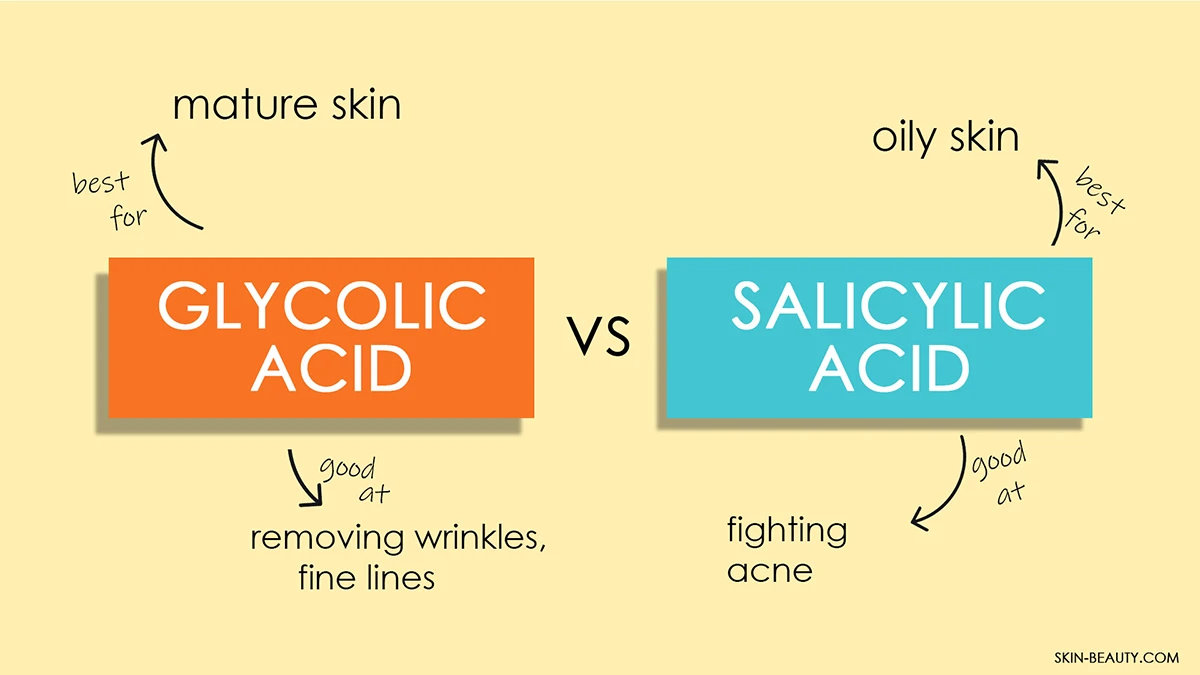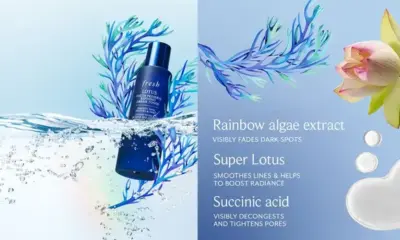Ingredients & Formulation
Glycolic Acid vs. Salicylic Acid: Dermatologists Break Down the Differences
The idea of incorporating skincare acids into your routine may initially seem overwhelming, but both salicylic acid and glycolic acid offer incredible benefits for your skin, making them worth considering.

Both Glycolic acid and Salicylic acid are standout exfoliants, each serves different purposes. Glycolic acid works well on the skin’s surface, tackling dryness, removing dead skin, reducing fine lines, and boosting radiance. On the other hand, salicylic acid clears pores, reduces oil production, and treats acne. Some people even choose to use both, depending on their skin’s needs. Keep reading to discover more about glycolic and salicylic acid, their differences, benefits, and how to integrate them into your skincare routine effectively.
What Is Glycolic Acid?
“Glycolic acid is an alpha hydroxy acid (AHA), a group of natural plant and animal-derived acids used to treat skin issues like acne, dryness, and aging,” explains board-certified dermatologist Melanie Palm, MD. “As we age, the natural cycle of skin cell turnover slows down, causing dead skin cells to accumulate, leading to a dull complexion.” Applying glycolic acid helps exfoliate the top layers of dead skin, encouraging the skin to generate new cells for a refreshed look.
Physician Lori Aliksanian, MD, compares glycolic acid to a mild chemical peel, saying it “brightens the skin and reduces superficial pigmentation from sun damage, while also minimizing fine lines.”
What Is Salicylic Acid?
“Salicylic acid is a beta hydroxy acid (BHA) that has been used for over 2,000 years to chemically exfoliate the skin,” says Aliksanian. “It can be naturally derived from willow bark or synthesized.” Board-certified dermatologist Dendy Engelman, MD, adds that salicylic acid works deep within your pores to clear out the top layer of skin, preventing clogs and breakouts.
Benefits and Uses
Glycolic Acid
Glycolic acid offers several key benefits for your skin, including:
- Dryness relief: It helps eliminate dry, flaky skin, leaving a smoother complexion.
- Tone and brightness: Its exfoliating properties even out skin tone and enhance your natural glow.
- Fine line reduction: Increased cell turnover from glycolic acid use can reduce the appearance of fine lines.
- Hyperpigmentation: “It can also improve hyperpigmentation and fade dark spots,” says Engelman.
Salicylic Acid
Salicylic acid, similarly, provides numerous skincare benefits:
- Clear pores and acne: Engelman explains, “It gently exfoliates, unclogs pores, clears dead cells, and treats acne.”
- Tone and texture: Like glycolic acid, it improves skin texture and has a brightening effect.
- Oil control: Salicylic acid regulates oil production, making it ideal for acne-prone skin.
Which Skin Types Should Use Each?
Glycolic Acid
Glycolic acid works well for normal, combination, and oily skin types. However, those with sensitive skin may experience irritation. As Palm advises, “Acne-prone or dull skin types may benefit most from glycolic acid,” while those with psoriasis, eczema, rosacea, or sensitive skin should patch-test before full application.
Salicylic Acid
Salicylic acid is safe for all skin types but is especially effective for oily, acne-prone skin, thanks to its pore-clearing and oil-reducing properties. However, it may cause irritation in those with dry or sensitive skin, eczema, or rosacea. Aliksanian recommends starting with low concentrations to see how your skin responds, particularly if your skin is sensitive.
Potential Side Effects and Precautions
Glycolic Acid
Common side effects from glycolic acid include mild irritation, itching, and increased skin sensitivity. Palm advises introducing glycolic acid slowly into your routine to minimize adverse reactions. Aliksanian also emphasizes that glycolic acid can make your skin more sensitive to sunlight, so daily SPF protection is essential.
If you’re using retinol, Engelman suggests alternating its use with glycolic acid to avoid over-exfoliating. Retinol can be applied at night, and glycolic acid can be used in the morning.
Salicylic Acid
Similar to glycolic acid, salicylic acid may cause dry, red, or irritated skin. Moisturizing after application can help reduce these side effects. As Engelman recommends, “If your skin is extremely sensitive, try incorporating salicylic acid with a moisturizer or at a lower concentration.” Additionally, salicylic acid may increase sun sensitivity, so always apply SPF 30 or higher when using it.
Can You Combine Glycolic and Salicylic Acid?
Glycolic and salicylic acids are generally safe to use together, but it’s crucial to monitor how your skin responds. “If your skin can tolerate it, using both acids can be a powerful duo for treating acne and exfoliating while addressing dullness,” says Palm. However, combining them may increase the risk of irritation, so it’s best to start with low-frequency use, applying the combination once or twice a week.
Final Takeaway
Both glycolic acid and salicylic acid offer significant skin benefits, and you can incorporate both into your routine if your skin responds well. Keep in mind that these acids can have side effects, so it’s important to consult with a dermatologist before use, especially if you have sensitive skin or conditions like rosacea or eczema. Start slowly, monitor your skin’s reactions, and enjoy the brightening, clearing, and anti-aging benefits these exfoliants provide.
TAG: Glycolic acid, salicylic acid, alpha hydroxy acid (AHA), beta hydroxy acid (BHA), Exfoliate





















